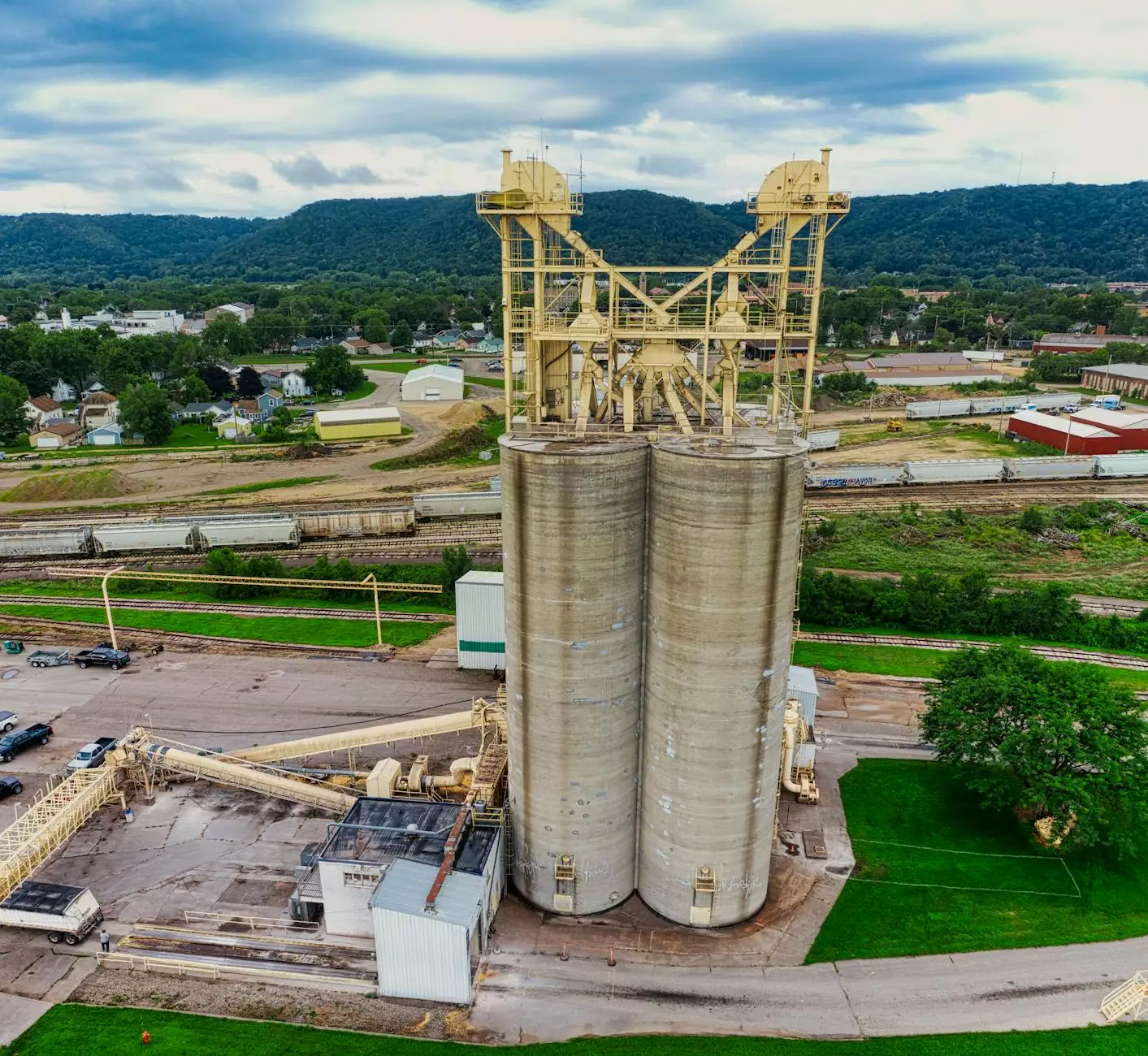Silo Temperature Monitoring: Essential for Efficient Farming Equipment Management

In today's competitive agricultural landscape, effective management of resources is critical for success. One of the most vital aspects of this management is silo temperature monitoring. It plays a paramount role in ensuring the quality and safety of stored grains and feeds. This article dives into the intricacies of silo temperature monitoring and highlights its importance in the realm of farming equipment.
What is Silo Temperature Monitoring?
Silo temperature monitoring refers to the process of continuously measuring and recording the temperature of grains stored in silos. This practice is essential for preventing spoilage, ensuring safety, and optimizing the quality of stored products.
Why is Silo Temperature Monitoring Important?
Implementing an efficient silo temperature monitoring system can greatly enhance your farming practices. Here are several reasons why it holds such significance:
- Prevention of Spoilage: Temperature fluctuations can lead to condensation, leading to spoilage. Monitoring helps in detecting these changes before they result in significant losses.
- Quality Assurance: Maintaining optimal temperature conditions ensures that the quality of grains and feeds is preserved, maintaining their nutritional value.
- Preventing Pests: Elevated temperatures can attract pests. With constant monitoring, you can mitigate the risk associated with infestations.
- Compliance and Safety: Regulatory standards often require the monitoring of stored materials. Ensuring that your silos are compliant minimizes the risk of liability issues.
- Cost-Efficiency: By preventing spoilage and pest infestations, you save money on losses and need fewer resources for remediation.
How Does Silo Temperature Monitoring Work?
Typically, silo temperature monitoring involves the use of sensors and data loggers strategically placed inside the silo. These devices measure temperature at various points, ensuring a comprehensive overview of the silo's internal conditions. The data collected can then be transmitted to a central system for analysis.
Types of Sensors Used in Silo Temperature Monitoring
The following types of sensors are commonly used in silo temperature monitoring systems:
- Thermistors: Highly sensitive to temperature changes, thermistors provide accurate measurements and quick response times.
- RTDs (Resistance Temperature Detectors): Known for stability and accuracy, RTDs are ideal for long-term temperature monitoring.
- Infrared Sensors: These non-contact sensors measure surface temperatures and can be used in scenarios where direct contact is not feasible.
Implementing Silo Temperature Monitoring: Steps to Success
To effectively implement a silo temperature monitoring system, consider the following steps:
1. Assess Your Needs
Determine the specific requirements for your storage facilities, including the type of grains stored and risk factors associated with spoilage or pest infestations.
2. Choose the Right Technology
Select a monitoring system that suits your needs. Factors to consider might include:
- Scalability: Can the system grow with your needs?
- Real-Time Monitoring: Does it offer immediate alerts for temperature changes?
- Integration: Can the system connect with your existing farm management software?
3. Regular Calibration and Maintenance
To ensure accuracy, regular calibration of sensors is necessary, alongside periodic maintenance of the monitoring system.
4. Train Your Staff
Implement a training program for your staff to ensure they are proficient in using the monitoring system and understanding the data it provides.
5. Review and Optimize
Regularly review the monitoring data for trends and make adjustments to your management practices based on the insights gained.
Benefits of Investing in Silo Temperature Monitoring
Investing in a robust silo temperature monitoring system offers numerous advantages:
- Enhanced Decision Making: Access to real-time data allows for immediate and informed decisions regarding storage conditions.
- Improved Crop Safety: Maintaining optimal temperatures lessens the likelihood of mold growth and degradation of the stored product.
- Increased Profitability: Reducing losses increases your bottom line, allowing for better investment in other areas of your farming operations.
Integration with Other Farming Equipment
Silo temperature monitoring does not stand alone; it can integrate effectively with other farming equipment to enhance overall operational efficacy. Here’s how:
1. Data Sharing
Advanced farming systems allow for the sharing of temperature data across various devices, enabling comprehensive analysis of farm conditions.
2. Automated Controls
Integration with climate control systems can facilitate automated adjustments to ventilation and cooling, based on the monitored data.
3. Enhanced Reporting
By combining silo monitoring data with other farm data, such as humidity and moisture levels, farmers gain a holistic view of their storage conditions, leading to more effective management strategies.
Common Challenges in Silo Temperature Monitoring
While the benefits of silo temperature monitoring are substantial, there are challenges that farmers may encounter, including:
- Initial Investment Costs: The cost of setting up a comprehensive monitoring system can be significant, though it pays off in the long run.
- Complexity of Technology: Some farmers may find the technology intimidating and require training to operate effectively.
- Data Overload: With large amounts of data, it can be challenging to identify actionable insights if an appropriate analysis framework is not in place.
Conclusion: The Future of Silo Temperature Monitoring
As technology continues to advance, the future of silo temperature monitoring looks promising. Innovations such as IoT-enabled sensors and artificial intelligence are set to revolutionize how farmers monitor and manage silo conditions. By staying ahead of the technological curve and adopting modern monitoring methods, farmers can safeguard their harvests, enhance product quality, and ultimately secure their place in an ever-evolving agricultural environment.
At TSGC Inc., we understand the significance of maintaining optimal storage conditions, particularly in relation to farming equipment repair and farming equipment management. Our team is dedicated to providing cutting-edge solutions tailored to meet your needs in efficient farm management.
For more information on how our services can assist you in implementing effective silo temperature monitoring solutions, visit our website or contact us today.



